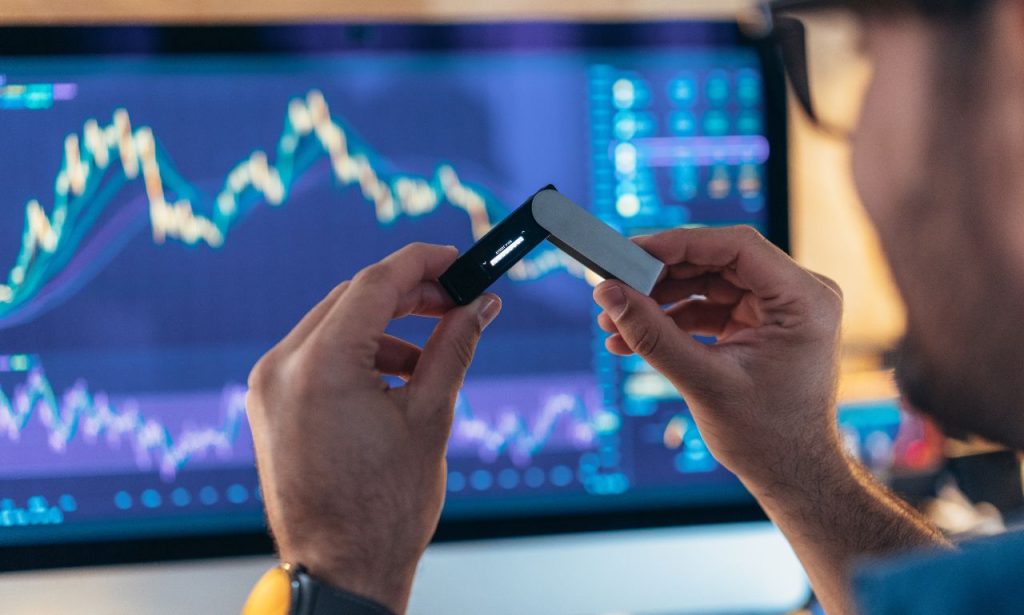Are you diving into the world of cryptocurrency and wondering about the risks involved? Well, buckle up, because today we’re tackling a crucial topic: what is a high-risk wallet? Not all crypto wallets are created equal, and understanding which ones come with greater risks can help protect your digital assets.
What Constitutes a High-Risk Wallet?
A high-risk wallet is one that has increased exposure to risks like fraud, money laundering, or illicit activity. It’s a wallet that’s likely involved in shady practices or, by design, lacks robust security measures. High-risk wallets often involve behaviors that make tracking difficult, meaning they could be used to funnel illegal funds. They may serve as gateways for bad actors, enabling them to conceal the origin of funds or facilitate suspicious transactions.
But what exactly makes a wallet high-risk? Here’s a breakdown:
- Association with High-Risk Services: Wallets used by services with high-risk merchant accounts, such as adult entertainment or darknet markets.
- Insufficient Compliance Programs: Wallets without appropriate AML checks or weak compliance measures.
- Frequent Involvement in High-Risk Transactions: Wallets regularly engaged in international transactions, high-ticket sales, or cryptocurrency money laundering activities.
- Lack of Regulatory Oversight: Wallets not linked to regulated financial institutions or lacking clear regulatory requirements.
Understanding these characteristics can help in wallet screening and ensure that your cryptocurrency transactions stay safe.
Types of Cryptocurrency Wallets

Before you delve into which wallets are high-risk, it’s important to know the different types of cryptocurrency wallets. Each type carries its own set of advantages and vulnerabilities, some of which make them more susceptible to risk.
Hot Wallets
Hot wallets are connected to the internet. They include mobile wallets, software wallets, and web wallets. Hot wallets are often praised for their convenience, but that comes at the cost of heightened vulnerability to attacks.
- Features: Online connection, easy access.
- Risk Level: High, due to constant exposure to potential attacks.
- Use Cases: Ideal for quick and frequent transactions, but risky for storing significant amounts of crypto assets.
- Examples: Exchange wallets like Binance and Coinbase.
Cold Wallets
Cold wallets are offline storage methods, like paper wallets or hardware wallets. They’re considered much safer from hacks, but they come with risks of their own—mostly due to physical vulnerabilities.
- Features: No internet connection, often a physical device.
- Risk Level: Lower than hot wallets, though they come with risks related to physical loss or damage.
- Use Cases: Suitable for storing large amounts of crypto for extended periods.
- Examples: Ledger Nano, Trezor.
Custodial Wallets
Custodial wallets are wallets in which a central party holds the private keys. Essentially, you’re trusting your funds to a third party, which might be a crypto exchange or payment service provider.
- Features: Third-party control, no direct private key access for users.
- Risk Level: Moderate to high, due to reliance on a central authority and exposure to regulatory oversight.
- Examples: Wallets offered by exchanges like Kraken and Gemini.
Non-Custodial Wallets
Non-custodial wallets provide you complete control over your private keys. You’re solely responsible for managing your funds, which provides privacy but can also come with increased risk if security measures are not diligently followed.
- Features: User-controlled private keys, higher autonomy.
- Risk Level: Moderate, risk is user-dependent.
- Examples: MetaMask, Trust Wallet.
Identifying High-Risk Wallets
Identifying a high-risk wallet requires a sharp eye on certain key indicators. These wallets often have unique behaviors and characteristics that distinguish them from safer alternatives.
Common Characteristics of High-Risk Wallets
- Frequent Transactions with Unknown Sources: High-risk wallets often show suspicious activity, involving illicit funds or transactions with unverified crypto wallet addresses.
- Involvement in High-Risk Jurisdictions: Wallets located in high-risk jurisdictions may lack regulatory oversight, making them more susceptible to fraudulent activities.
- Association with High-Risk Industries: Wallets linked to high-risk industries like adult entertainment, darknet marketplaces, or those used by money mules for laundering purposes.
- Non-Compliance with AML Standards: Wallets not complying with Anti-Money Laundering regulations are considered extremely high-risk.
Behavioral Patterns Indicating High-Risk Status
- Unusually High Transaction Frequency: Wallets with daily transactions that show erratic patterns—high volumes with little to no clear destination of funds.
- Frequent Engagement in P2P Transfers: Involvement with P2P exchanges that bypass regulatory scrutiny.
- Association with High-Risk Counterparties: Wallets that frequently send or receive transactions from other wallets flagged as high-risk accounts or high-risk businesses.
Regulatory Considerations
Importance of Compliance in Cryptocurrency Transactions

When dealing with digital wallets and cryptocurrency assets, complying with regulatory requirements isn’t just good practice—it’s a necessity. This ensures that your funds are not being funneled into illegal activity or contributing to terrorist financing.
- AML Checks: Financial service providers are required to conduct AML (Anti-Money Laundering) checks. Wallets not adhering to these standards are considered high-risk and should be avoided.
- Ongoing Monitoring: Wallets that aren’t involved in ongoing monitoring are more likely to enable money laundering purposes.
Role of Anti-Money Laundering (AML) Checks
- Customer Identification: Proper AML practices involve customer identification and screening for suspicious transactions.
- Monitor Transactions: Regular monitoring can help identify wallets that may be engaging in high-risk activities or illegal funds.
Counterparty Wallet Identification
Identifying the counterparty wallet type is essential for understanding the level of risk you’re dealing with. When engaging in crypto transactions, make sure you know who is on the other side.
Methods for Identifying Counterparties
- Wallet Screening: Use a wallet identification tool to determine whether the counterparty is linked to high-risk addresses or flagged for money laundering risk.
- Transaction History Analysis: Examining past transactions can reveal patterns that indicate whether a wallet is linked to high-risk individual or high-risk exchanges.
Tools for Wallet Analysis
- Blockchain Explorers: Websites like Etherscan and Blockchain.com can be used to track wallet activity and identify fraud patterns.
- AML and Fraud Detection Services: Companies like Chainalysis provide real-time monitoring and help flag suspicious transactions or wallets that may be linked to financial crime risks.
Strategies for Protecting Against High-Risk Wallets
Best Practices for Secure Transactions
- Know Your Wallet Type: Decide whether you need a hot wallet for quick access or a cold wallet for secure storage. Remember, hot wallets are often the riskiest.
- Segregate Funds: Use different wallets for different purposes. For instance, keep a smaller amount in a hot wallet for daily use and the majority in a cold wallet.
- AML and KYC Checks: Stick to wallet providers that implement strong AML (Anti-Money Laundering) and KYC (Know Your Customer) checks to avoid interacting with high-risk wallets.
- Two-Factor Authentication (2FA): Always enable Two-Factor Authentication to add an extra layer of security to your wallet.
Using Security Features in Wallets
- Multi-Signature Wallets: Use multi-signature wallets for additional security, as transactions need multiple parties to approve, reducing the likelihood of unauthorized activity.
- Encryption: Choose wallets with strong encryption methods to secure crypto transactions and reduce risks from fraudulent activities.
- Cold Storage: Keep the majority of your crypto assets in cold storage, where they are safe from online threats and bad actors.
What is a High-Risk Wallet? Key Takeaways
To recap, what is a high-risk wallet? It is essentially a wallet with elevated exposure to potential fraud, regulatory non-compliance, and illegal uses such as money laundering and terrorist financing. These wallets often engage in suspicious transactions, lack proper security, and evade regulatory scrutiny. High-risk wallets can easily become conduits for illicit activity, and it is crucial to remain vigilant in identifying and avoiding them.
- Regulatory Non-Compliance: High-risk wallets are often non-compliant with AML and KYC standards, making them easy tools for money laundering purposes and terrorism financing.
- Lack of Transparency: These wallets may also operate in regions or through services that don’t comply with regulatory oversight, making it difficult to ascertain their true purpose and affiliations.
- Association with High-Risk Services: Some wallets are explicitly linked to high-risk industries or high-risk jurisdictions that pose significant risks, such as involvement in darknet marketplaces or illegal funds transfer.
Compliance Measures to Avoid High-Risk Wallets
One way to avoid dealing with high-risk wallets is to adhere to regulatory guidelines, which are designed to help identify and limit interaction with such wallets. Virtual asset service providers are expected to follow stringent compliance measures to prevent the circulation of illicit funds and identify high-risk individual or high-risk businesses.
- Use Compliant Wallets: Choose wallets that have proper business licenses and regulatory backing. Many wallets offered by established cryptocurrency exchanges are compliant with regulatory requirements.
- Compliance Programs: Verify if the wallet provider has a robust AML and KYC compliance program. Compliant wallets also help mitigate risks like chargeback fraud and high-ticket sales to unauthorized entities.
Ongoing Monitoring and Transaction Analysis
Regularly monitor transactions to ensure that no suspicious transactions are taking place. Monitoring helps in identifying fraud attempts, high-risk customers, and fraud patterns.
- Transaction Hash Verification: Verifying the transaction hash is a good way to confirm that the funds have reached a legitimate destination and are not involved in money laundering activities.
- Wallet Screening Tools: Tools like Chainalysis can help in screening wallets for red flags that indicate high-risk wallet behaviors.
The Role of High-Risk Wallets in Fraudulent Activities

High-risk wallets play a significant role in the execution of fraudulent activities such as crypto money laundering, money mules, and child abuse material transactions on darknet marketplaces. They can also be linked to adult entertainment services that lack transparency, contributing to illegal activity within the cryptocurrency industry.
- Facilitating Illicit Activity: High-risk wallets may be used for illicit funds transfers, facilitating crimes like child abuse or terrorism financing by concealing the origin of funds.
- Darknet Markets: These wallets often participate in darknet marketplaces, where illegal funds are exchanged, making them inherently riskier to use.
- Money Laundering: Wallets that are not scrutinized properly can serve as an easy tool for crypto money laundering, effectively turning dirty money into legitimate assets.
High-Risk Wallets and Their Impact on Financial Transactions
The impact of high-risk wallets on the broader financial services landscape cannot be overstated. They pose a threat to the cryptocurrency industry by making legitimate services more vulnerable to regulatory backlash and potentially leading to increased cash reserve requirements for exchanges and payment gateways.
- Increased Risk Level: Any wallet address associated with high-risk industries increases the risk level of the entire platform or individual transacting with it.
- Fraud Detection Costs: Identifying and mitigating the risks associated with high-risk wallets requires enhanced fraud detection measures, which can be costly for legitimate businesses.
- Legal Proceedings: High-risk wallets often find themselves in the middle of legal proceedings, especially those associated with darknet marketplaces and other illegal activities.
Conclusion
Understanding what constitutes a high-risk wallet is critical to safely navigating the complex landscape of cryptocurrencies. By choosing secure wallets, staying compliant with regulations, and being vigilant, you can protect yourself from the myriad risks that come with high-risk wallets. Remember, not all wallets are created equal, and it’s essential to know how to identify and avoid high-risk wallets to ensure the safety of your digital assets.
ALSO READ: Why Are Berkey Water Filters Banned in California?
FAQs
Wallets involved in suspicious activity, lacking regulatory compliance, or operating in high-risk jurisdictions are often labeled as high-risk.
Custodial wallets can be riskier because you rely on a third party for the security of your funds, which may be vulnerable to hacks or fraud.
Yes, but limit the amount stored and ensure you have robust security measures like Two-Factor Authentication in place.
Use tools like wallet screening software or blockchain explorers to check for fraud patterns and counterparty identification.




